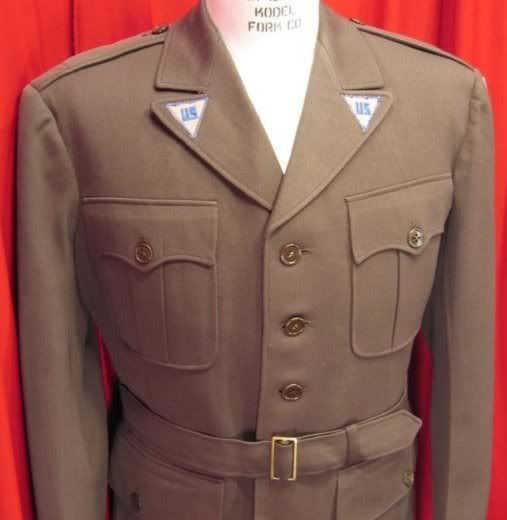Hi Gang,
This might seem odd but since I'm getting into the Home Front genre of collecting and living-history, I'm trying to bring as much "real" me into the impression as possible and take advantage of the rich history of the organization for which I work.
For the last 14 years, I've worked as a Gov't Contractor at Aberdeen Proving Ground; specifically the Automotive testing area which under a different name tested every tank and armored vehicle standardized by the Army. I manage our inventory of "instrumention" which our techs mount on vehicles to record various tests and which ultimately "pass" or "fail" a vehicle's perfromance.
I have the previledge of working with guys whose fathers, mothers and grandfathers and grandmothers worked here during WW2 (and earlier). APG is- and has been- THE major employeer in Harford County, MD since 1918/19
There is a TON of history here as well as people that lived it. An older retired friend was a "Boss" of this same organization in 1980s and 1990s and his father worked here as an engineer here in WW2. My barber (who is retired Gov't) worked at APG in the 60s. I even worked with a man nick-named "Golf Ball" Jones. Mr. Jones was 18 and serving on the USS Missouri when the Armistice with Japan was signed. He proudly showed my a little certificate with Rising Sun stating that "Seaman Jones was present at the signing, etc..." or something like that- it was 10+ years ago so I forget... In fact, sections of the current "land" that APG resides was purchased from the Halsted family which now reside up in Delta, Pa- two Halsteds work with me today!
Anyways... While most men went to the military, many were considered essential to the war effort. Most men in technical jobs stayed here (APG), while many (but not all) driver and maintenance men were drafted.
So I'm developing a specific impression around who I'd possibly be in WW2. A war worker whose job was considered essential at APG/Maryland. I'm researching (as best I can) how people commutted to work her for instance. One interesting detail is the fabled "doodle-bug" train, which was still rotting away about 6 years ago. It carried workers from parking in the town of Aberdeen to various places on APG proper. Not everyone drove directly to where they worked or wanted to go and it needless help alleviate the burden of gas-rationing on workers to some degree.
So is anyone out there doing something similar?? Have any advice??? Interested in taking part???
Clint
This might seem odd but since I'm getting into the Home Front genre of collecting and living-history, I'm trying to bring as much "real" me into the impression as possible and take advantage of the rich history of the organization for which I work.
For the last 14 years, I've worked as a Gov't Contractor at Aberdeen Proving Ground; specifically the Automotive testing area which under a different name tested every tank and armored vehicle standardized by the Army. I manage our inventory of "instrumention" which our techs mount on vehicles to record various tests and which ultimately "pass" or "fail" a vehicle's perfromance.
I have the previledge of working with guys whose fathers, mothers and grandfathers and grandmothers worked here during WW2 (and earlier). APG is- and has been- THE major employeer in Harford County, MD since 1918/19
There is a TON of history here as well as people that lived it. An older retired friend was a "Boss" of this same organization in 1980s and 1990s and his father worked here as an engineer here in WW2. My barber (who is retired Gov't) worked at APG in the 60s. I even worked with a man nick-named "Golf Ball" Jones. Mr. Jones was 18 and serving on the USS Missouri when the Armistice with Japan was signed. He proudly showed my a little certificate with Rising Sun stating that "Seaman Jones was present at the signing, etc..." or something like that- it was 10+ years ago so I forget... In fact, sections of the current "land" that APG resides was purchased from the Halsted family which now reside up in Delta, Pa- two Halsteds work with me today!
Anyways... While most men went to the military, many were considered essential to the war effort. Most men in technical jobs stayed here (APG), while many (but not all) driver and maintenance men were drafted.
So I'm developing a specific impression around who I'd possibly be in WW2. A war worker whose job was considered essential at APG/Maryland. I'm researching (as best I can) how people commutted to work her for instance. One interesting detail is the fabled "doodle-bug" train, which was still rotting away about 6 years ago. It carried workers from parking in the town of Aberdeen to various places on APG proper. Not everyone drove directly to where they worked or wanted to go and it needless help alleviate the burden of gas-rationing on workers to some degree.
So is anyone out there doing something similar?? Have any advice??? Interested in taking part???
Clint





